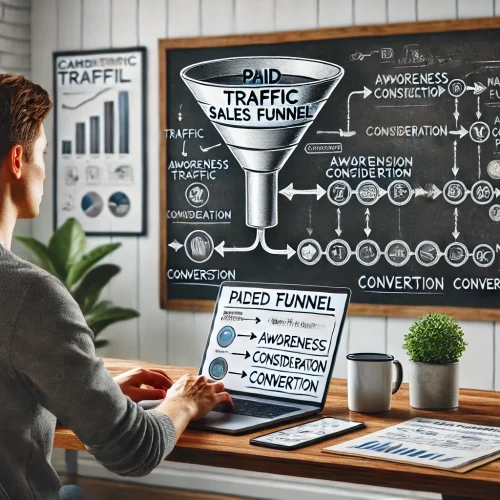Think you need a blog or full website to make money with affiliate marketing? Think again.
While having your own site gives you full control, there are plenty of ways to promote affiliate links without a website — and many successful affiliates do exactly that. With the right platforms and strategies, you can still build trust, drive traffic, and earn commissions using free or low-barrier tools.
In this article, you’ll learn exactly how to start promoting affiliate links without a website, step-by-step.
Can You Really Do Affiliate Marketing Without a Website?
Absolutely. In fact, if you:
- Use social media
- Create videos
- Write emails
- Share in online communities
- Or design helpful free resources
…you’re already equipped to start affiliate marketing — no blog required.
The key is to focus on value-first content and use platforms that allow link sharing ethically and effectively.
Strategy 1: Use Social Media Platforms
Social media is one of the fastest and most popular ways to share affiliate links — especially if you have (or are building) an engaged audience.
Platforms that work well:
- Instagram – Use “Link in bio” tools (like Linktree or Beacons)
- TikTok – Short videos + bio link or “DM me for the link”
- Facebook – Share in groups or on your profile (if relevant)
- Pinterest – Create pins that link to your affiliate offers or opt-ins
- Twitter (X) – Threads, tips, and product recommendations
💡 Tip: Don’t just drop links. Share stories, tips, or results that lead naturally to the product.
Strategy 2: Create a Free Link Hub (Linktree or Beacons)
If your platform limits how many links you can share (like Instagram), use a link hub.
Tools:
- Linktree
- Beacons
- Tap.bio
Use it to include:
- Your top affiliate links
- A free lead magnet (to build an email list)
- Your YouTube, email list, or social links
💡 Customize it with branding and CTAs like “Get my top tools” or “Try this free resource.”
Strategy 3: Promote on YouTube
You don’t need a blog to create educational or review content. YouTube is one of the best platforms for affiliate marketing without a website.
How to do it:
- Create videos around tutorials, reviews, comparisons, and top tools
- Add affiliate links in the video description
- Mention them in the video: “Link is in the description below”
Example:
“I’ve tested 3 different writing tools, and here’s the one that boosted my productivity — link below for a free trial.”
🎥 Pro tip: Add value first, promote second.
Strategy 4: Use Email Marketing with a Lead Magnet
Even if you don’t have a website, you can still grow an email list and promote affiliate links directly to subscribers.
Tools to start:
- Systeme.io (free funnels + email)
- MailerLite
- ConvertKit Free Plan
How to do it:
- Create a lead magnet (e.g., “My top 10 free tools for freelancers”)
- Share the opt-in link on social media or in forums
- Send a welcome email series with affiliate links inside
💡 Bonus: You build your own audience without needing a blog.
Strategy 5: Share Links in Online Communities (The Right Way)
Reddit, Quora, and Facebook groups are full of people looking for solutions. Done right, these platforms can drive a lot of warm traffic.
Do’s:
- Offer real advice and solutions
- Link to a helpful resource (e.g., a lead magnet or video)
- Share a personal story or case study
Don’ts:
- Spam your affiliate link with no context
- Post in groups or threads that don’t allow promotion
- Copy-paste the same answer everywhere
🌱 Build credibility first — the clicks will follow.
Strategy 6: Create and Share a Free Download (PDF)
Design a free PDF or checklist that includes affiliate links, then distribute it through social media, forums, or email.
Example:
- “Freelancer Toolkit” with links to time trackers, proposal templates, and tools
- “30-Day Self-Care Guide” with recommended wellness products
- “Launch Your Blog Checklist” linking to hosting and themes
Tools to create it:
- Canva
- Google Docs
- Notion
💡 Make the content helpful first — links should feel like natural resources.
Strategy 7: Use Pinterest as a Visual Search Engine
Pinterest is not just social — it’s a search engine, and you can link your pins to:
- Affiliate-friendly landing pages
- Email opt-in pages
- Affiliate-safe blog platforms (like Medium or Substack)
Tips:
- Create click-worthy pins in Canva
- Use keywords in your pin title and description
- Test multiple designs per product or topic
📌 Great for niches like lifestyle, DIY, health, and productivity.
Strategy 8: Publish on Free Blogging Platforms
If you’re not ready for your own domain, you can still publish blog-style content and promote affiliate products.
Free platforms:
- Medium.com – Add links in guides and reviews
- Vocal.Media – Monetized content + affiliate-friendly
- Substack – Email-based blogs with article-style posts
You get the benefit of SEO and structured content without paying for hosting.
Strategy 9: Host a Free Workshop or Live Stream
People love live interaction — and you don’t need a site to run a workshop.
Ideas:
- Host a free “How I got started with XYZ” Zoom session
- Teach a tool tutorial on Instagram or YouTube Live
- Promote your affiliate links at the end
Pair this with a link in your bio or email signup to continue the relationship.
Final Thoughts: Start Where You Are
You don’t need a full website or blog to start affiliate marketing. You just need:
- A platform (YouTube, email, social)
- A valuable message
- And a product that solves a real problem
Start simple. Be helpful. Share your journey. With consistency and care, your affiliate links will start to convert — and your income will grow.








